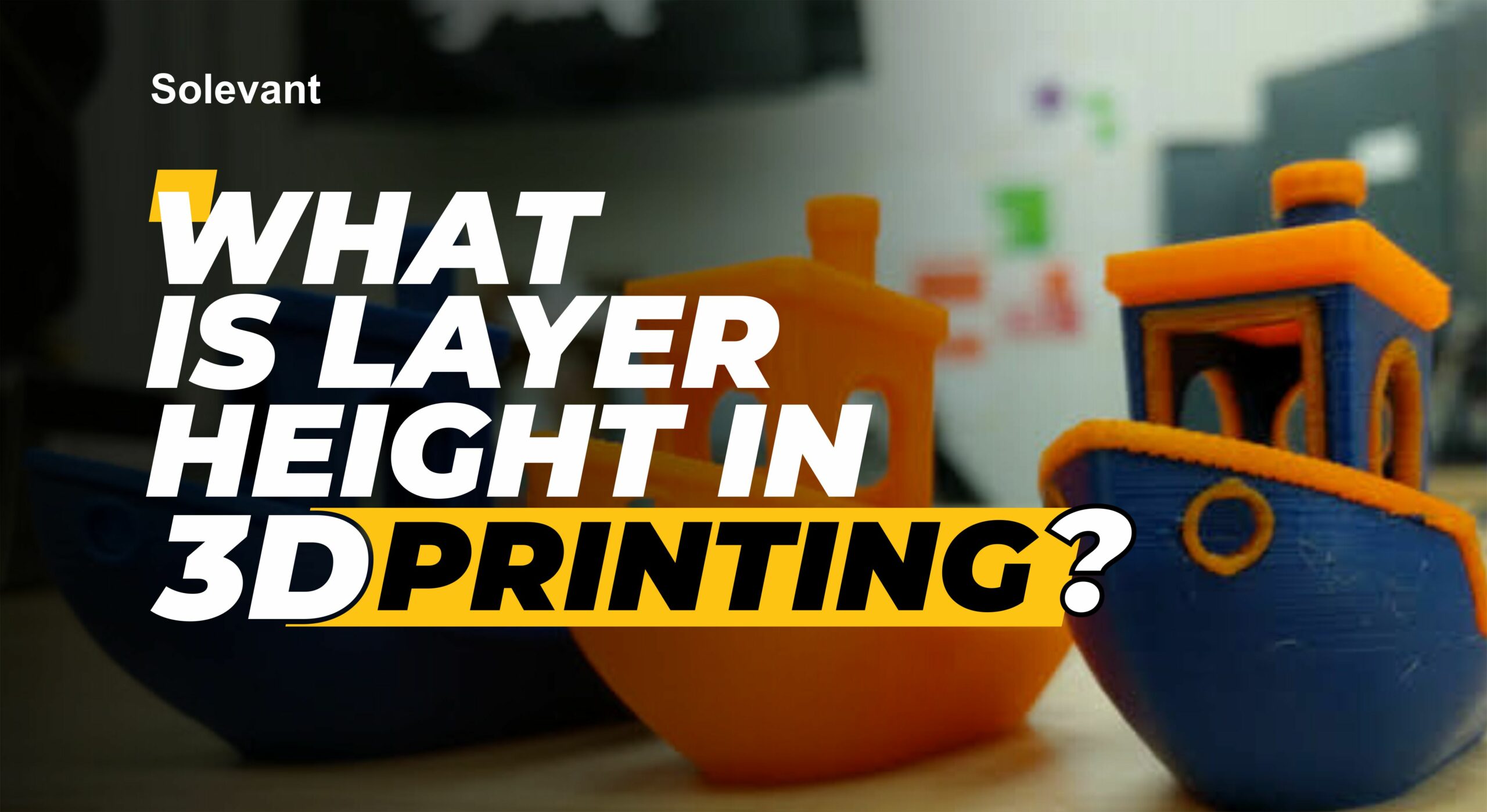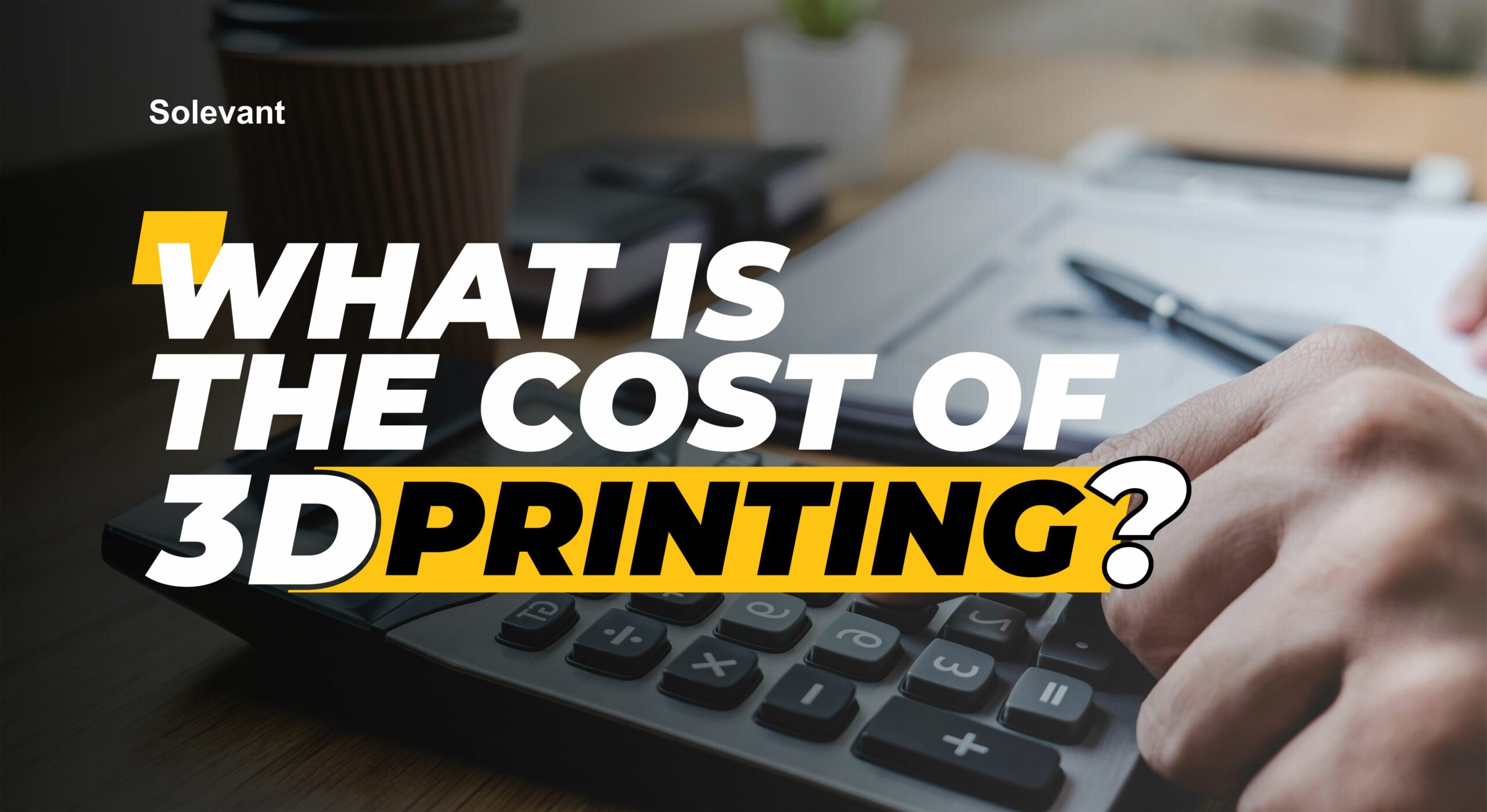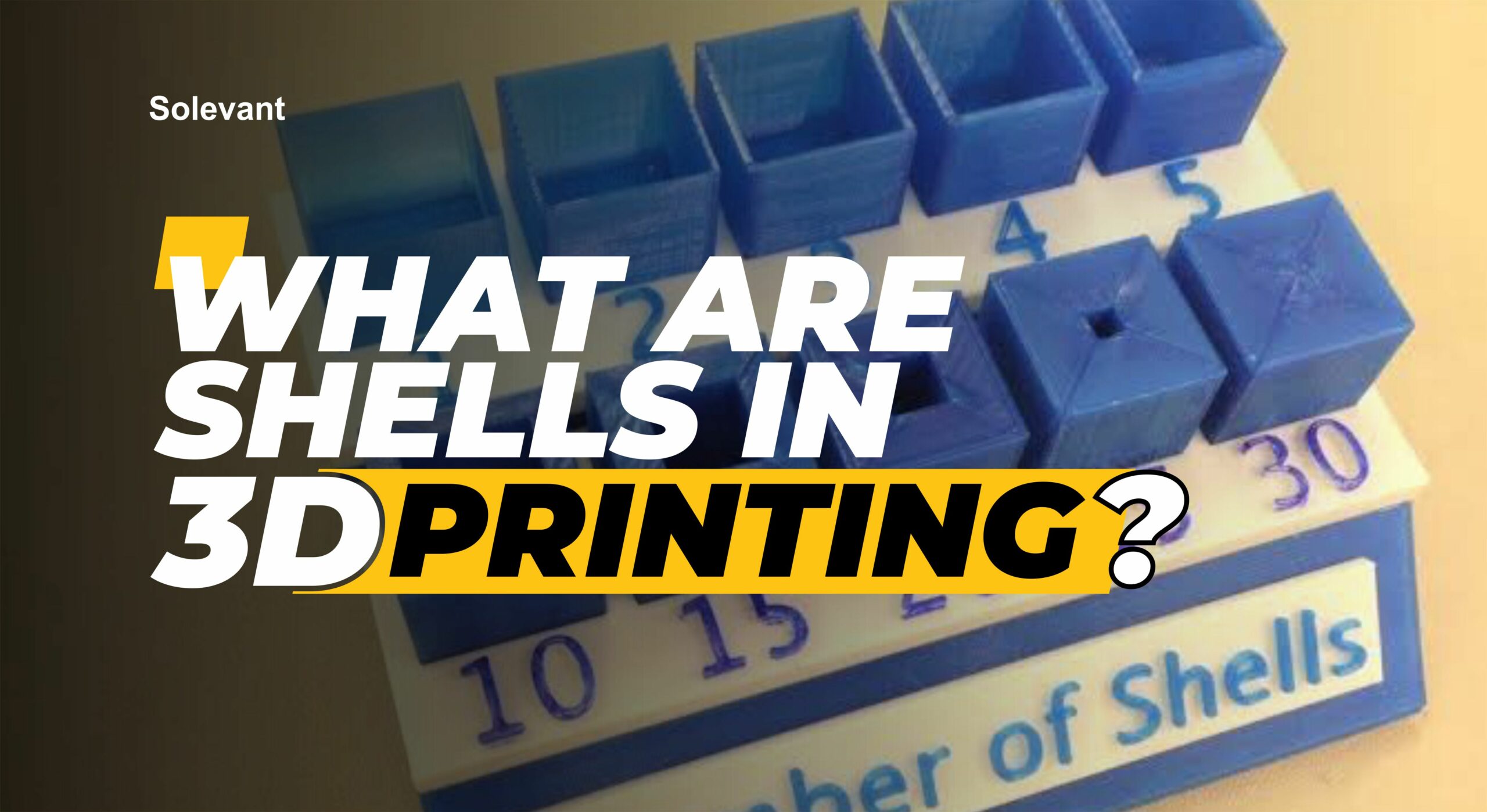
A Beginner’s Guide to G-Code in 3D Printing
To print a sturdy 3D model, you need the right G-code so the 3D printer can function at its best. Read this article to learn about G-coding in 3D printing.
Home » Construction » Page 4

To print a sturdy 3D model, you need the right G-code so the 3D printer can function at its best. Read this article to learn about G-coding in 3D printing.

Everything has its other side. Although 3D printing is a revolutionary technology, it has drawbacks. Find out the cons of 3D printing in this guide.

In today’s technologically-crazed industrial world, the 3D printing business is about more than just producing prototypes. The role manufacturing businesses like 3D printing play in

Are you curious about the cost and benefits of 3D printing? While some high-end printers can come with a steep price tag, there are also

3D printing has revolutionized the way we design and manufacture products. From prototyping to small-scale production, 3D printing is used in countless industries, and one

Do you want to know more about 3D printing? It can be intimidating to jump right into the industry with little knowledge. One key element

3D printing has revolutionized the way we think about manufacturing and product development. However, as with any new technology, there are costs associated with 3D

You can create some spectacular models using 3D printing, but there may be certain steps required to ensure a neat print. Depending on the additive

In 3D printing, a shell is a printed object’s outer wall or perimeter. It is typically composed of multiple layers, each slightly offset from the

Metal 3D printing, also known as metal additive manufacturing, is revolutionizing the production of metal parts. This technology allows for greater flexibility in the design
Construction Software is a valuable tool for professionals in the construction industry, aiding in project management, collaboration, and overall efficiency. This software offers a range of features that streamline various aspects of construction projects.
One key benefit of Construction Software is its ability to simplify project management tasks. Project managers can use the software to efficiently plan, schedule, and track the progress of construction projects. It provides a centralized platform for organizing tasks, timelines, and resources, contributing to effective project coordination.
In addition to project management, Construction Software facilitates collaboration among team members. It allows for seamless communication and information sharing, reducing the likelihood of errors and delays. This collaborative aspect extends to subcontractors, architects, and other stakeholders involved in the construction process.
Cost estimation and budget management are critical aspects of construction projects, and Construction Software is designed to assist in these areas. The software helps professionals create accurate cost estimates, track expenses, and manage budgets effectively. This contributes to financial transparency and better decision-making throughout the project lifecycle.
Document management is another essential feature of Construction Software. It provides a centralized repository for storing and accessing project documents, including blueprints, contracts, and permits. This ensures that all team members have access to the latest and most relevant information, reducing the risk of errors and misunderstandings.
Safety and compliance are paramount in the construction industry, and Construction Software often includes features to monitor and enforce safety protocols. This helps ensure that projects adhere to industry regulations and standards, promoting a secure working environment.
Overall, Construction Software is a versatile tool that enhances the efficiency of construction projects. It simplifies project management, fosters collaboration, aids in cost estimation and budget management, streamlines document management, and contributes to safety and compliance.
As an integral part of modern construction practices, this software plays a crucial role in the successful and timely completion of construction projects.
Let’s break down the various types of construction software that play crucial roles in the construction industry.
Project management software is the backbone of construction projects. It helps in planning, scheduling, and tracking tasks. With features like resource allocation, budget monitoring, and timeline management, this type of software ensures that projects stay on track and within budget.
BIM software allows for the creation of detailed 3D models that represent the entire building or infrastructure.
This type of software enhances collaboration among various stakeholders by providing a comprehensive view of the project. It includes information about design, construction, and maintenance, fostering better decision-making.
Estimating software is essential for accurate cost predictions. It aids in creating detailed and precise estimates by considering factors such as materials, labor, equipment, and overhead costs. This type of software minimizes the likelihood of budget overruns and ensures realistic project financial planning.
Accounting software streamlines financial management for construction projects. It handles tasks like invoicing, payroll, budget tracking, and overall financial reporting. This type of software ensures transparency in financial transactions and compliance with industry regulations.
Keeping track of documents is a monumental task in construction. Document management software helps organize and store project-related documents, such as contracts, drawings, and permits. This not only ensures easy access to information but also enhances collaboration among team members.
Scheduling software is crucial for efficient time management in construction projects. It helps in creating realistic timelines, assigning tasks, and tracking progress. This type of software minimizes delays, optimizes resource allocation, and ensures that the project is completed within the specified timeframe.
Safety is a top priority in construction. Safety management software helps in monitoring and enforcing safety protocols. It tracks incidents, conducts risk assessments, and ensures compliance with safety regulations. This type of software contributes to creating a secure work environment for construction teams.
Let’s delve into the key benefits of utilizing construction software.
Construction software streamlines project management by providing a centralized platform for collaboration. This facilitates effective communication and coordination among team members, ensuring everyone is on the same page regarding project timelines, tasks, and updates. It minimizes the risk of miscommunication and delays.
One of the primary benefits of construction software is its ability to aid in cost control and budget management. Through features such as real-time tracking of expenses, it allows project managers to monitor costs closely. This transparency helps in identifying potential cost overruns early on, enabling timely adjustments to stay within budget.
Efficient scheduling is crucial in construction projects. Construction software assists in creating and managing project schedules, optimizing timelines, and allocating resources effectively. This not only enhances project efficiency but also helps in meeting deadlines and avoiding unnecessary delays.
Keeping track of a myriad of construction documents can be challenging. Construction software simplifies document management by providing a centralized repository for blueprints, contracts, permits, and other essential files. This ensures that all team members have easy and secure access to the latest project documentation.
Effective communication is key to project success. Construction software facilitates seamless collaboration by offering features like real-time messaging, document sharing, and collaborative editing. This ensures that all stakeholders, including architects, contractors, and clients, can work together efficiently, even if they are in different locations.
Maintaining high-quality standards is critical in construction. Construction software assists in implementing and monitoring quality control processes.
It can include tools for conducting inspections, tracking defects, and ensuring that work meets the specified standards. This helps in delivering a final product that meets or exceeds client expectations.
Ensuring the safety of workers on construction sites is a top priority. Construction software often includes features for safety management, such as tracking safety protocols, conducting safety inspections, and maintaining compliance with industry regulations. This proactive approach contributes to a safer work environment.
Many construction software providers adopt a subscription-based model, where users pay a recurring fee (monthly or annually) for access to the software. This model often includes updates, support, and scalability options. Subscription-based pricing can be advantageous for businesses with fluctuating project demands.
This model charges a fee for each user accessing the construction software. As the number of users increases, so does the overall cost. It’s essential to align the number of licenses with the actual user requirements to avoid unnecessary expenses.
Some construction software providers offer project-based pricing, especially for smaller teams or specific projects. This model allows businesses to pay for the software based on the scale and duration of individual projects.
Certain construction software providers offer freemium models, providing basic functionalities for free while charging for premium features or expanded usage. This allows users to test the software’s suitability before committing to a paid plan.
Construction software is a versatile tool that finds utility among diverse stakeholders in the construction industry. Here are some users who benefit from leveraging construction software to streamline processes and enhance efficiency:
Project managers play a pivotal role in overseeing construction projects from initiation to completion. Construction software assists them in project planning, scheduling, resource allocation, and progress tracking. This digital tool provides a centralized platform for managing tasks, timelines, and resources, ultimately contributing to effective project management.
For architects and designers, construction software serves as a collaborative platform where they can create, modify, and share design plans in real-time.
This facilitates seamless communication among team members and ensures that everyone is on the same page regarding project specifications. It also enables the visualization of designs in 3D, offering a more comprehensive understanding of the intended structures.
On the ground, construction workers and contractors benefit from construction software for task management, scheduling, and communication. Mobile applications allow workers to access project details, submit progress reports, and communicate with the team, enhancing coordination and reducing delays.
Estimators and quantity surveyors rely on construction software for accurate cost estimation and budgeting. These tools streamline the process of quantifying materials, labor, and other project expenses. This not only improves the accuracy of estimates but also enhances the overall financial planning for construction projects.
Construction software provides owners and clients with transparency and real-time insights into project progress.
Through dashboards and reports, they can monitor timelines, budgets, and milestones. This transparency fosters trust and allows stakeholders to make informed decisions throughout the construction process.
Ensuring the safety of construction sites is paramount. Construction software includes features for safety management, such as tracking compliance with safety regulations, conducting inspections, and managing incidents. This contributes to a safer work environment and helps in mitigating potential risks.
Here are some popular construction software products:
Procore is a comprehensive construction management platform that facilitates project collaboration, document management, and quality control. It offers tools for project scheduling, budgeting, and communication, making it a go-to solution for construction teams.
PlanGrid, an Autodesk company, is a construction productivity software that focuses on document management and collaboration. It allows users to access and update project plans in real-time, reducing their reliance on paper documents and enhancing communication among team members.
Autodesk Construction Cloud is an integrated construction management solution that combines various tools, including PlanGrid, BIM 360, and BuildingConnected. It offers features for project documentation, quality management, and building information modeling (BIM).
ProEst is a construction estimating software designed to help contractors create accurate project estimates. It includes features for bid management, cost tracking, and project collaboration, making it a valuable tool for construction professionals.
Buildertrend is a cloud-based construction management software that covers project management, customer communication, and financials. It is particularly popular among residential construction professionals and allows for real-time collaboration between builders, subcontractors, and clients.
CoConstruct is a construction project management and estimating software designed for custom home builders and remodelers. It includes features for project scheduling, budgeting, and client communication, providing an all-in-one solution for construction projects.
CMiC is an integrated construction management software that covers the entire project lifecycle. It includes modules for project financials, document management, and collaboration. CMiC is designed for construction firms looking for an end-to-end solution.
| Feature | Description |
| Project Management | Plan, schedule, and track construction projects, including task assignment, progress monitoring, and resource allocation. |
| Document Management | Centralized storage and management of project documents, drawings, contracts, and other relevant files. |
| Cost Estimation | Accurately estimate project costs by analyzing materials, labor, equipment, and overhead expenses. |
| Budget Tracking | Monitor and track project expenses against the budget in real-time to ensure financial goals are met. |
| Resource Allocation | Efficiently allocate and manage human resources, equipment, and materials for optimal project execution. |
| Scheduling and Calendar | Create and manage project schedules, including Gantt charts and calendars, to ensure timely completion of tasks. |
| Collaboration Tools | Foster communication and collaboration among project team members, stakeholders, and subcontractors. |
| BIM (Building Information Modeling) | Implement BIM for 3D modeling, visualization, and coordination of construction processes for enhanced project understanding. |
| Subcontractor Management | Manage relationships with subcontractors, including bid management, contract negotiation, and performance tracking. |
| Equipment Management | Track and maintain construction equipment, schedule maintenance, and optimize equipment utilization. |
| Change Order Management | Streamline the process of documenting, reviewing, and managing changes to the original project scope. |
| Safety and Compliance | Monitor and enforce safety protocols, track compliance with regulations, and manage incident reporting. |
| Quality Control | Implement processes for quality assurance and control to ensure that construction meets specified standards. |
| Mobile Access | Provide mobile applications or access to enable on-site teams to input data, access documents, and stay connected. |
| Reporting and Analytics | Generate reports and analytics on project progress, costs, and other key performance indicators for informed decision-making. |
| Permitting and Approvals | Facilitate the process of obtaining permits and approvals from regulatory bodies to ensure legal compliance. |
| Inventory Management | Track and manage construction materials and supplies in real-time, optimizing inventory levels and reducing waste. |
| Integration | Description |
| Project Management Software | Integration with project management tools for planning, scheduling, and tracking construction projects. |
| Building Information Modeling (BIM) Software | Seamless integration with BIM software for collaborative 3D modeling, design coordination, and data visualization. |
| Estimating Software | Integration with estimating tools to accurately calculate project costs, including materials, labor, and overhead. |
| Accounting Software | Syncs with accounting software to manage financial transactions, invoicing, and budget tracking for construction projects. |
| Document Management System | Integrates with document management platforms for efficient storage, retrieval, and sharing of project documents and drawings. |
| Scheduling Software | Integration with scheduling tools to create and manage construction timelines, including task dependencies and resource allocation. |
| Collaboration Platforms | Integrates with collaboration platforms for real-time communication and coordination among project team members, subcontractors, and stakeholders. |
| Equipment Management System | Syncs with equipment management software to track the usage, maintenance, and availability of construction equipment. |
| Supply Chain Management | Integration with supply chain management systems for efficient procurement, inventory management, and supplier collaboration. |
| Safety Management Software | Integrates with safety management tools to track and enforce safety protocols, incidents, and compliance with regulations. |
| Mobile Field Reporting | Integration with mobile field reporting apps for on-site data collection, progress reporting, and issue resolution. |
| Bid Management Software | Syncs with bid management tools for streamlined bidding processes, including document distribution and bid analysis. |
| GIS (Geographic Information System) | Integration with GIS for location-based data analysis, site selection, and mapping in construction projects. |
| Quality Management System | Integrates with quality management software to ensure adherence to construction standards, inspections, and issue resolution. |
| Human Resources Management | Syncs with HR software for managing construction workforce, including payroll, employee records, and certifications. |
| Energy Management Systems | Integration with energy management systems for sustainable construction practices and monitoring energy efficiency. |
| CRM for Construction | Integrates with Customer Relationship Management (CRM) software to manage client relationships, communications, and project leads. |
Below are the potential issues that may arise with construction software. It’s crucial to be aware of these challenges to effectively navigate and address them for successful implementation and usage in construction projects.
One common challenge is ensuring the seamless integration of construction software with existing systems. Compatibility issues with other software or hardware can lead to data inconsistencies and errors and hinder the overall efficiency of the construction process.
Introducing new construction software often comes with a learning curve for users. Training sessions may be required to familiarize construction professionals with the features and functionalities, potentially causing a temporary slowdown in productivity during the transition period.
Construction projects involve sensitive data, and ensuring the security of this information is paramount. Issues such as unauthorized access, data breaches, or vulnerabilities in the software can pose significant risks. Robust security measures must be in place to safeguard project data and sensitive information.
While construction software is designed to streamline processes and enhance efficiency, there is a risk of cost overruns associated with its implementation. Unforeseen expenses related to software customization, additional training, or potential disruptions during the adoption phase may impact the project budget.
Construction projects vary widely in their requirements, and software that lacks customization options may not align with the specific needs of a project. The challenge lies in finding software solutions that can be tailored to meet the unique demands of different construction scenarios.
Keeping construction software up-to-date is essential for optimal performance and security. However, frequent updates may pose challenges, especially if they require system downtime. Additionally, maintenance issues or bugs in the software can disrupt project timelines and workflows.
Resistance to change is a common hurdle when introducing new technology. Construction professionals may be accustomed to traditional methods and be hesitant to adopt new software. Effective communication and support during the transition phase are crucial to overcoming user resistance.
One notable trend is the widespread adoption of cloud-based construction software. This technology allows for centralized data storage and real-time collaboration, enabling project stakeholders to access information from anywhere. This not only streamlines communication but also enhances the overall efficiency of project management.
Building Information Modeling continues to be a significant trend in construction software. BIM facilitates the creation of detailed 3D models, offering a comprehensive view of a project from conception to completion.
This not only aids in better project visualization but also improves coordination among different teams, leading to more accurate and efficient construction processes.
The increasing use of mobile applications in construction software is a trend that caters to the on-the-go nature of construction work. Construction professionals can now manage tasks, access project data, and communicate with team members directly from their mobile devices. This trend enhances the flexibility and responsiveness of project management.
The integration of AI and ML into construction software is gaining momentum. These technologies help in predictive analytics, risk assessment, and even automation of certain tasks. From project scheduling to resource allocation, AI and ML contribute to more informed decision-making, ultimately improving project outcomes.
Similar to AI, Augmented Reality is making its mark in the construction industry. AR applications enable users to visualize construction plans in the real world, enhancing on-site decision-making. This trend is particularly valuable for project managers, architects, and contractors seeking to minimize errors and improve overall project accuracy.
With the increasing reliance on digital solutions, the importance of data security and privacy in construction software cannot be overstated. The trend involves implementing robust security measures to protect sensitive project data from unauthorized access or cyber threats, ensuring the integrity of information throughout the project lifecycle.
Effective project management is crucial in construction. Project management software helps teams plan, schedule, and execute projects seamlessly.
It includes features such as task tracking, collaboration tools, and document management. This software centralizes project data, making it accessible to all stakeholders, fostering better communication, and ultimately improving project outcomes.
BIM software enables detailed 3D modeling of construction projects, offering a holistic view of the entire building lifecycle. It goes beyond traditional blueprints by incorporating data about materials, costs, and timelines. BIM facilitates collaboration among architects, engineers, and contractors, reducing errors and optimizing resource utilization.
Accurate cost estimation is fundamental in construction. Estimating software helps in creating precise project cost projections by factoring in materials, labor, and other expenses. This not only aids in budgeting but also in bid preparation, allowing construction firms to compete effectively in the market.
Construction projects involve intricate timelines and dependencies. Scheduling software assists in creating realistic project timelines, considering various tasks, dependencies, and resource availability. It helps in identifying potential bottlenecks and optimizing schedules for efficient project delivery.
Financial management is a critical aspect of construction projects. Construction accounting software tracks expenses, manages budgets, and ensures compliance with financial regulations. It simplifies payroll, invoicing, and financial reporting, providing construction firms with accurate financial insights for informed decision-making.
Construction projects generate a vast amount of documents, from contracts and permits to blueprints and change orders. Document management services streamline the organization, storage, and retrieval of these documents.
This ensures that all stakeholders have access to the latest and relevant information, reducing the risk of errors and delays.
Telematics services for construction equipment provide real-time data on the location, usage, and maintenance needs of heavy machinery.
This helps in optimizing equipment utilization, improving safety, and reducing downtime. Telematics contribute to proactive maintenance, ultimately extending the lifespan of construction equipment.
Frequently Asked Question on Construction Software